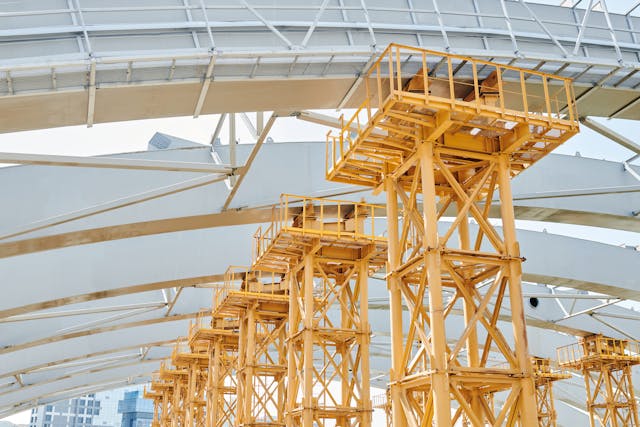The Australian building construction industry is currently experiencing a radical shift due to construction technology in Australia. The integration of digital tools and innovative practices is transforming the way construction projects are executed, enhancing efficiency, sustainability, and safety. In this article, we’ll explore how digiital transformation in building is influencing the industry as well as upcoming innovations in construction that are shaping the future.
The Rise of Digital Transformation in Building
The transition to digital platforms in the construction sector is not just a trend; it’s a necessary evolution. As the demand for faster project delivery and enhanced collaboration increases, the construction industry must adapt. Digital transformation in building includes the adoption of Building Information Modeling (BIM), project management software, and cloud-based solutions. These technologies allow for better planning, communication, and execution of projects.
With BIM, for instance, architects and engineers can create detailed 3D models of buildings, enabling stakeholders to visualize outcomes before breaking ground. This technology greatly reduces errors and improves design accuracy, thus saving time and resources in the long run. Furthermore, cloud-based project management tools keep teams connected, ensuring that every member stays informed of changes and updates in real-time.
Innovations in Construction: Improving Efficiency and Safety
Innovation is at the heart of the evolving construction technology in Australia. The need for sustainable practices is prompting builders to adopt eco-friendly materials and methods. One notable example is the use of 3D printing to construct building components. This innovative approach minimizes waste and lowers costs while ensuring structural integrity.
Moreover, robotics and automation are becoming increasingly prevalent in construction practices. Drones, for example, provide aerial site surveys, which enhance project monitoring and management. These uncrewed aerial vehicles can swiftly create maps and models of construction sites, making it easier for project managers to assess progress and identify potential challenges.
Enhancing Collaboration and Communication
In a sector that traditionally suffered from fragmented communication, the emergence of collaborative technologies is a game changer. Platforms that integrate various aspects of construction management are crucial in breaking down silos. For instance, the use of mobile applications in project management enables field workers to share insights and data instantly, fostering real-time decision-making and collaboration.
This level of connectivity not only speeds up the workflow but also enhances safety on construction sites. By ensuring that everyone is on the same page, the likelihood of accidents or misunderstandings is significantly reduced. Enhanced communication tools also facilitate training, allowing for on-the-spot tutorials that help workers navigate new technologies and systems.
The Role of Artificial Intelligence in Construction
Artificial Intelligence (AI) is another frontier in construction technology in Australia. AI can analyze vast amounts of data to predict project risks and trends. Machine learning algorithms can help project managers identify delays and resource shortages before they become significant issues, thus facilitating proactive management.
Additionally, AI-powered tools can enhance safety measures by assessing potential hazards on-site. For instance, some AI systems analyze worker behavior through video feeds to determine if safety protocols are followed. These insights can lead to more comprehensive training programs tailored to the specific needs of the workforce, thereby reducing accidents and improving overall safety.
The Future of Building Construction in Australia
The landscape of the Australian building construction industry is primed for continuous transformation. As more companies embrace innovations in construction, they are likely to witness an increase in efficiency, a decrease in project timelines, and improved safety outcomes. The importance of integrating new technologies cannot be overstated—it’s no longer an option but a demand in today’s fast-paced construction environment.
Looking ahead, sustainability will be a significant driver of change. As regulations around environmental impact continue to tighten, builders will be compelled to adopt cleaner, more sustainable practices. This will likely include greater investment in renewable energy technologies and eco-friendly construction materials.
Conclusion
In conclusion, the impact of technology on the Australian building construction industry is profound and multifaceted. From digiital transformation in building to the rise of AI and innovative building methods, the future holds exciting possibilities. As industry players continue to leverage these advancements, the potential for enhanced efficiency, safety, and sustainability will only grow. It’s an exhilarating time for construction in Australia, and staying ahead of technological trends will be key to thriving amidst this rapid evolution.
FAQs
- What technologies are leading the transformation in the construction industry?
The leading technologies include Building Information Modeling (BIM), project management software, 3D printing, drones, and AI. - How is digital transformation affecting project timelines?
Digital transformation improves planning, collaboration, and resource management, which in turn accelerates project timelines. - What is the significance of sustainability in the construction industry?
Sustainability is crucial for meeting regulatory standards and addressing environmental concerns, and it is driving the adoption of greener practices and materials.
References
- Asian Infrastructure Investment Bank
- ABC News on 3D Printing Revolution
- World Bank on Infrastructure
“`









